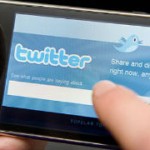 The notion that we flock to social media during events of interest to us is pretty well established now. Indeed, the live coverage of events as they unfold is often one of the more endearing qualities of Twitter. How do such events influence the way we use social media however?
The notion that we flock to social media during events of interest to us is pretty well established now. Indeed, the live coverage of events as they unfold is often one of the more endearing qualities of Twitter. How do such events influence the way we use social media however?
A study published recently by the MIT Senseable City Lab set out to find out just that. It revealed that the type of message we post changes substantially the more frequently we post them.
“This helps us better understand what is going on—the way we respond to things becomes faster and more impulsive,” says Carlo Ratti, director of the Senseable City Lab and an associate professor of the practice in MIT’s Department of Urban Studies and Planning.
On Twitter for instance, it emerged that on average our tweets were between 70 and 120 characters long. When we began to ramp up the frequency of tweets however, with the most frequent posters averaging a paltry 25 characters per tweet!
“If you plot the rate of the messages versus the length, then you can find a mathematical relation between these two things during [major] events,” adds Michael Szell, a researcher at the Senseable City Lab.
The bulk of the study surrounded the 2012 Masters golf tournament, won that year in dramatic circumstances by Bubba Watson. Perhaps not surprisingly, many of the tweets simply contained ‘Bubba’ followed by several exclamation marks.
They also studied data during the US election night in November 2012, and during a snowstorm in February 2013.
“We wanted to see if this was Twitter-specific or if it happens in other media as well,” Szell says. “Basically we found this effect every time there was an event going on. And when there was no event, we did not find this effect.”
Suffice to say, all of these examples are from the public world. It would be interesting to see if similar findings emerged from live corporate events, such as an idea jam.